Best Space Photos of the Week — July 19, 2015
Wide view of Charon
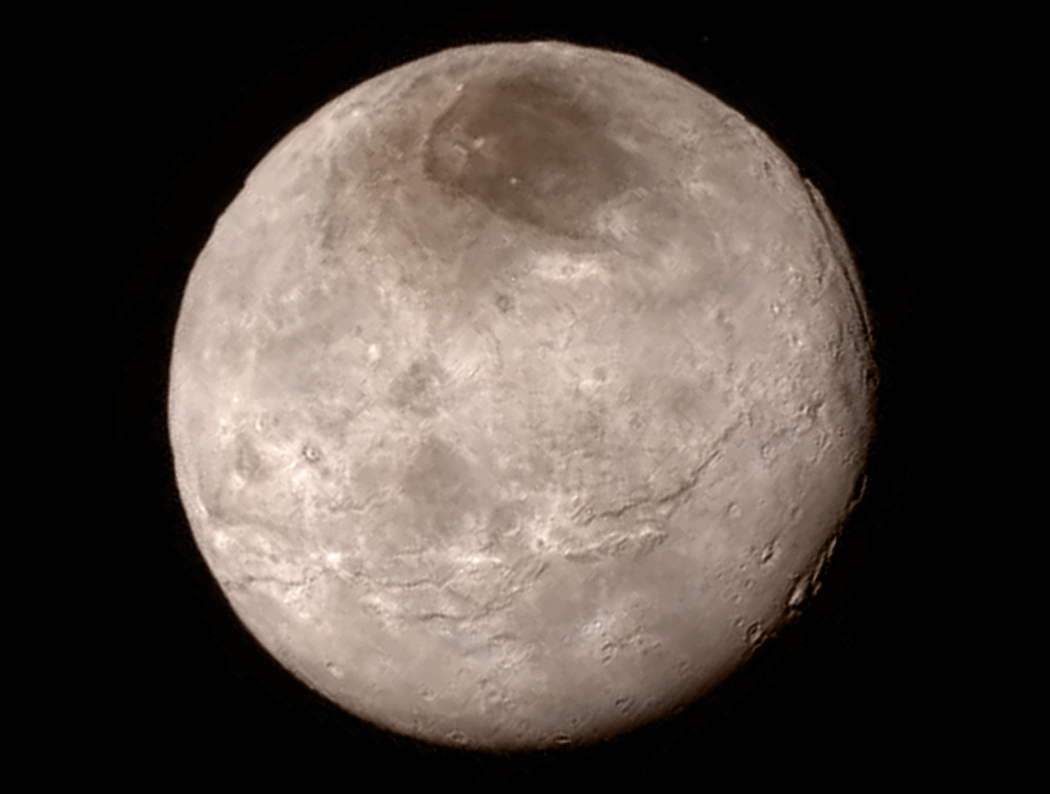
This image of Pluto’s largest moon, Charon, shows canyons up to 6 miles (10 kilometers) deep. NASA’s New Horizons probe took the photo on July 14, 2015 from a distance of 289,000 miles (466,000 kilometers).
[Read the full story.]
Wide view of Pluto

New Horizons' photo of Pluto showing the heart-shaped area now informally named 'Tombaugh Regio'.
[Read the full story.]
Close up on Pluto
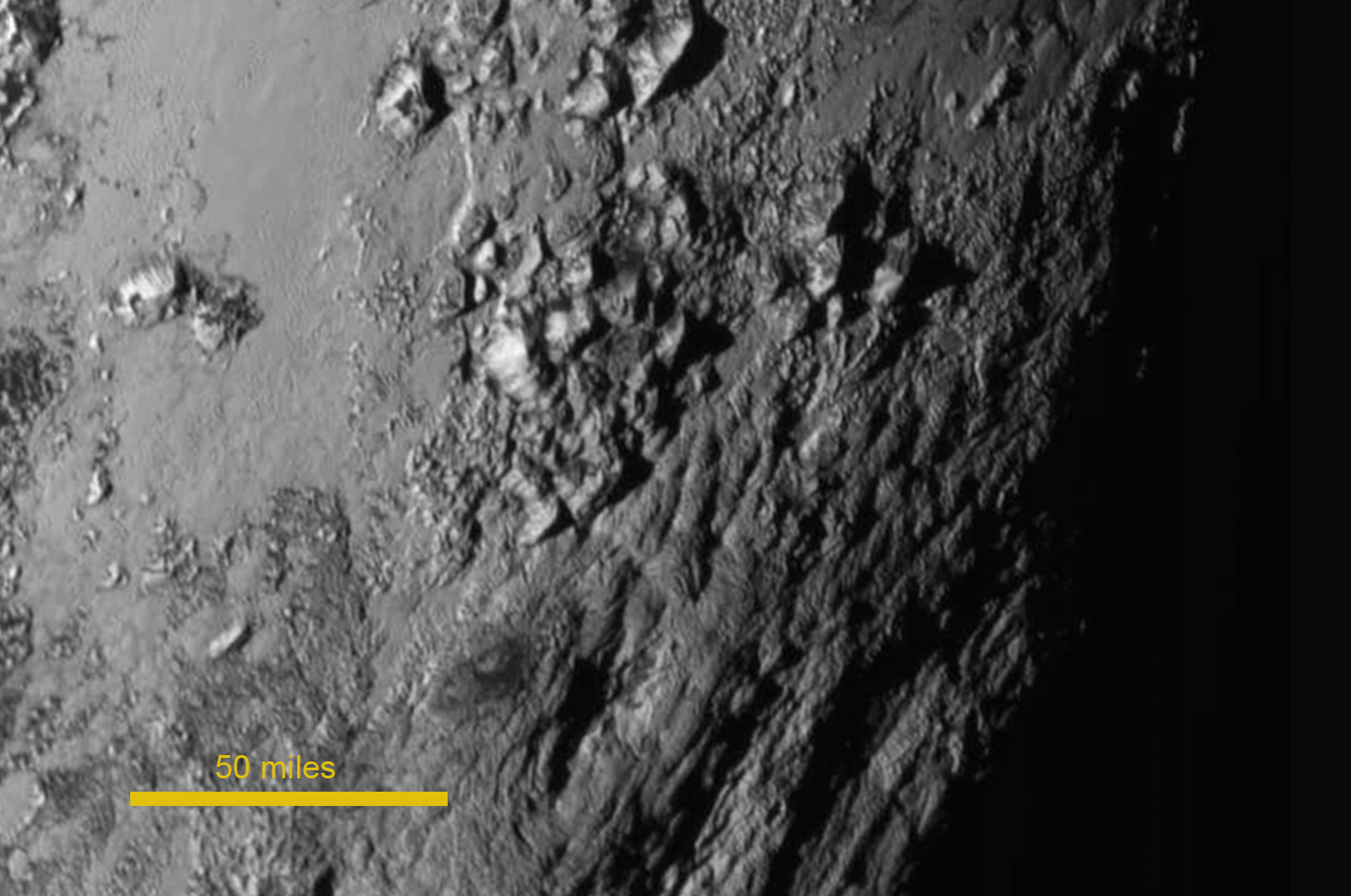
Ice mountains about 11,000 feet (3,500 meters) high — but no obvious craters — are visible in this photo, which was captured by NASA's New Horizons spacecraft on July 14, 2015 from a distance of 47,800 miles (77,000 kilometers).
[Read the full story.]
Norgay Mountains on Pluto
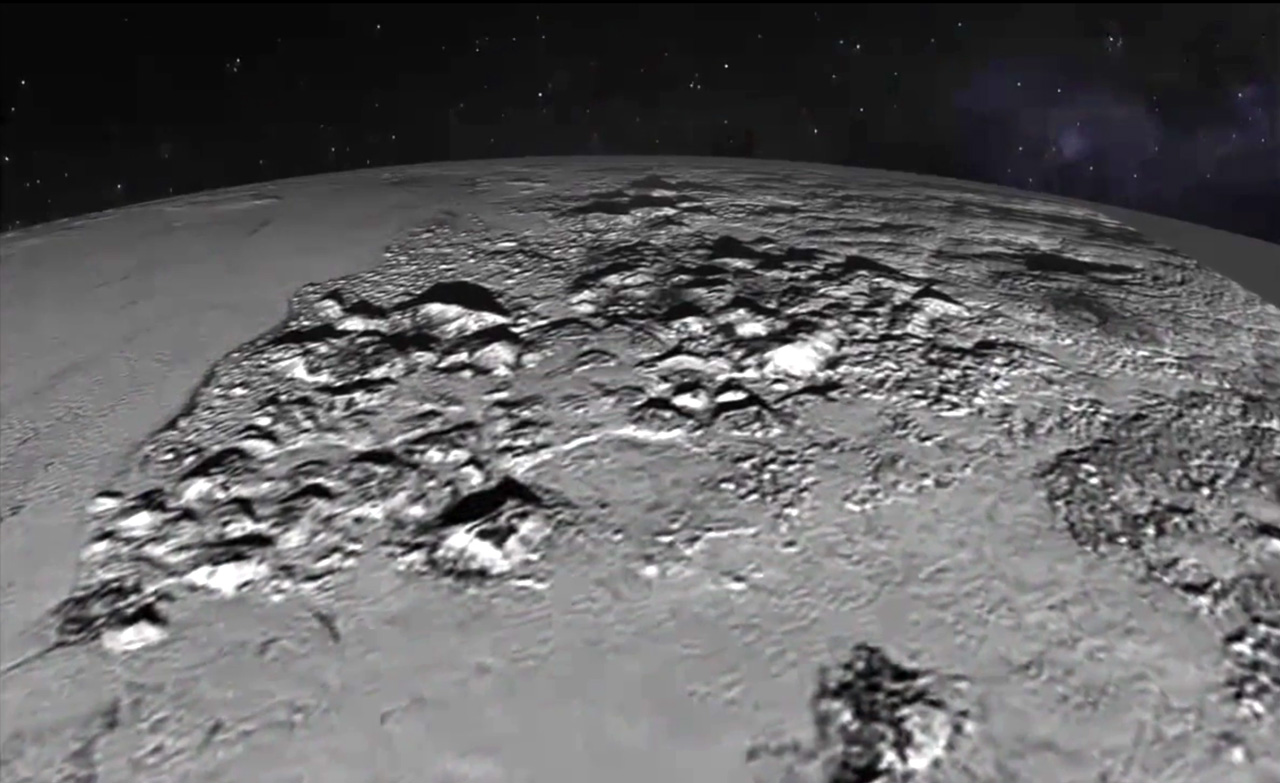
Tentatively named Norgay Montes after Tenzing Norgay, who made the first ascent of Mt. Everest
[Read the full story.]
Pluto's Icy Plains
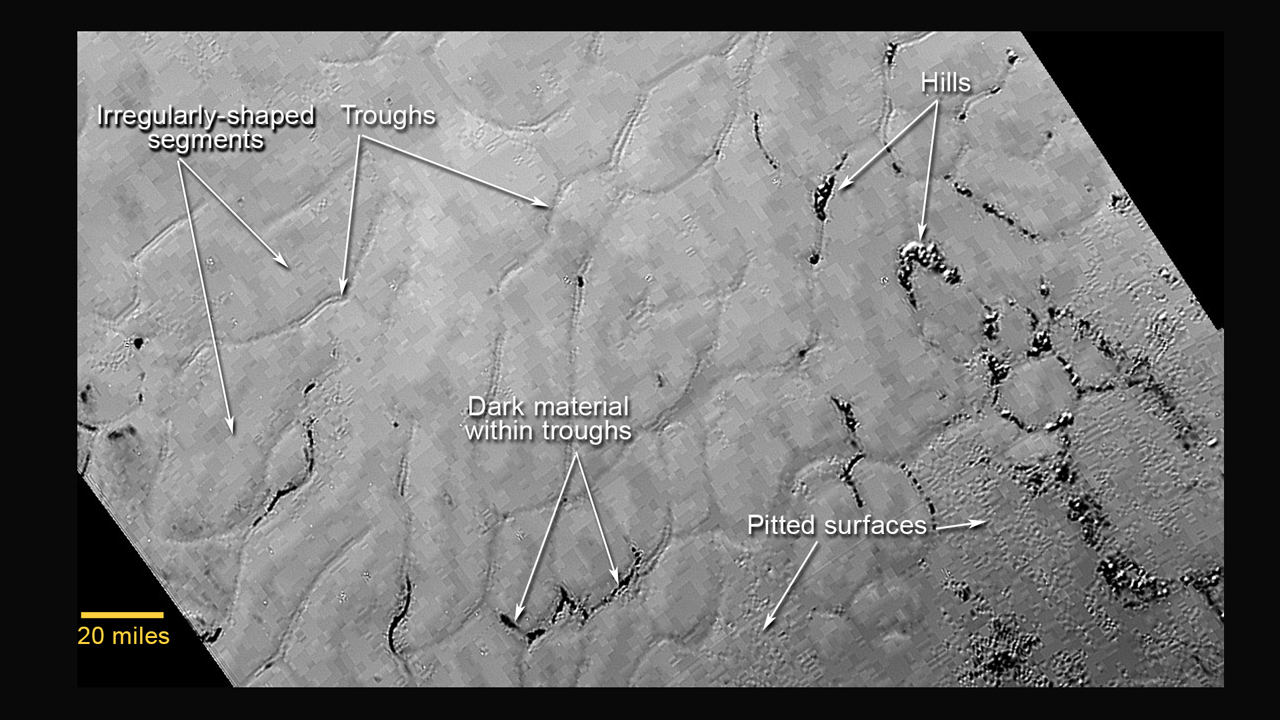
This annotated view of part of Pluto’s Sputnik Planum region shows an array of enigmatic features. The photo was acquired by NASA’s New Horizons probe on July 14, 2015 from a distance of 48,000 miles (77,000 kilometers). Features as small as 0.5 miles (1 km) across are visible. The blocky appearance of some features is due to image compression.
[Read the full story.]
Pluto: Explored!
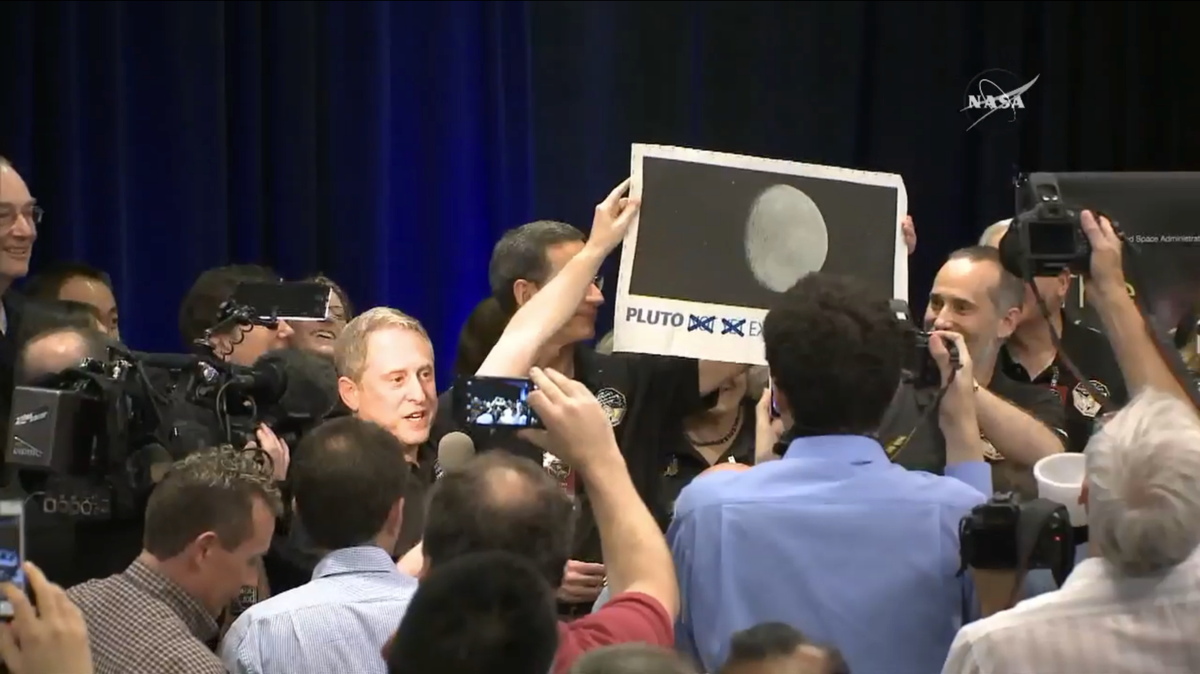
At the Johns Hopkins Applied Physics Laboratory in Maryland, New Horizons Principal Investigator Alan Stern holds up a poster of Pluto showing the words: PLUTO: NOT YET EXPLORED, with the words "NOT YET" crossed out, shortly after the Pluto probe made its historic flyby on July 14, 2015.
[Read the full story.]
Slayton and Leonov in Soyuz

Astronaut Donald K. "Deke" Slayton embraces cosmonaut Aleksey Leonov in the Soyuz spacecraft.
[Read the full story.]
Get the Space.com Newsletter
Breaking space news, the latest updates on rocket launches, skywatching events and more!
Sun Halo
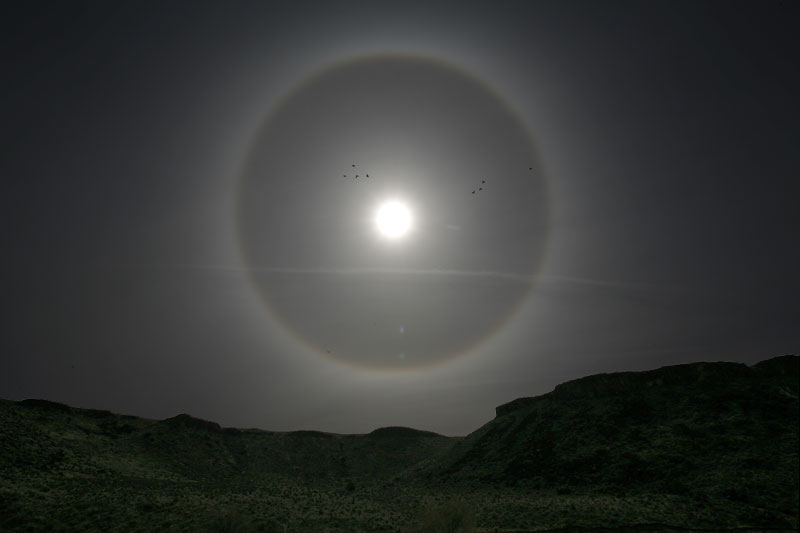
Light being refracted in the atmosphere of the Earth can sometimes create a halo around the sun or moon. Similarly, light from another star being refracted in an exoplanet atmosphere can cause an increase in the amount of light detected from the star just before the planet transits.
[Read the full story.]
US Air Force Launches GPS Satellite, July 15, 2015
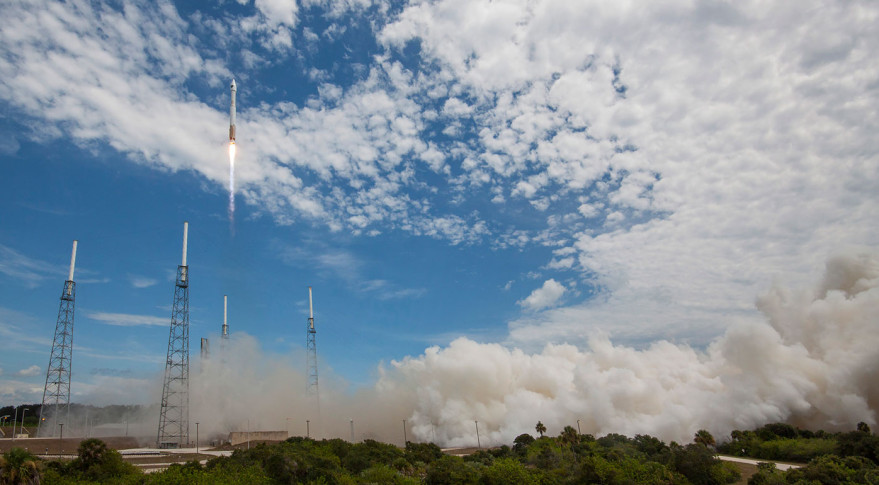
A United Launch Alliance Atlas V rocket, carrying the GPS 2F-10 satellite for the U.S. Air Force, blasts off on July 15, 2015 from Florida’s Cape Canaveral Air Force Station.
[Read the full story.]
Mars Rocks Up Close
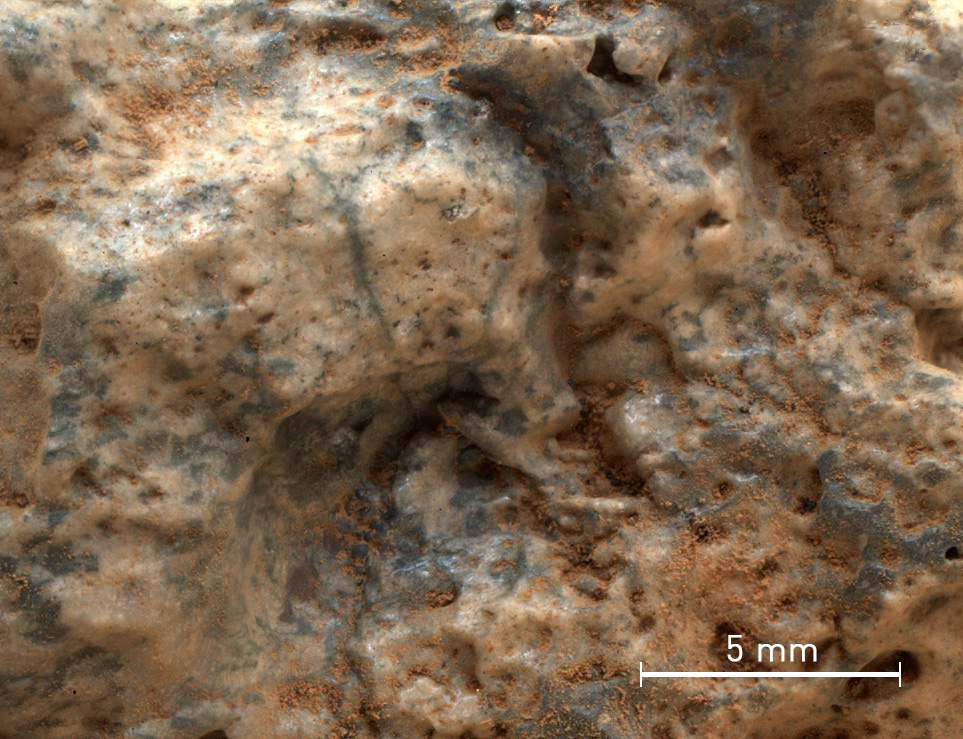
This image captured by the Mars rover Curiosity shows a rock harboring coarse, pearly feldspar crystals intermixed with small quartz crystals and dark silicate material.
[Read the full story.]
Planck Satellite Sky Map
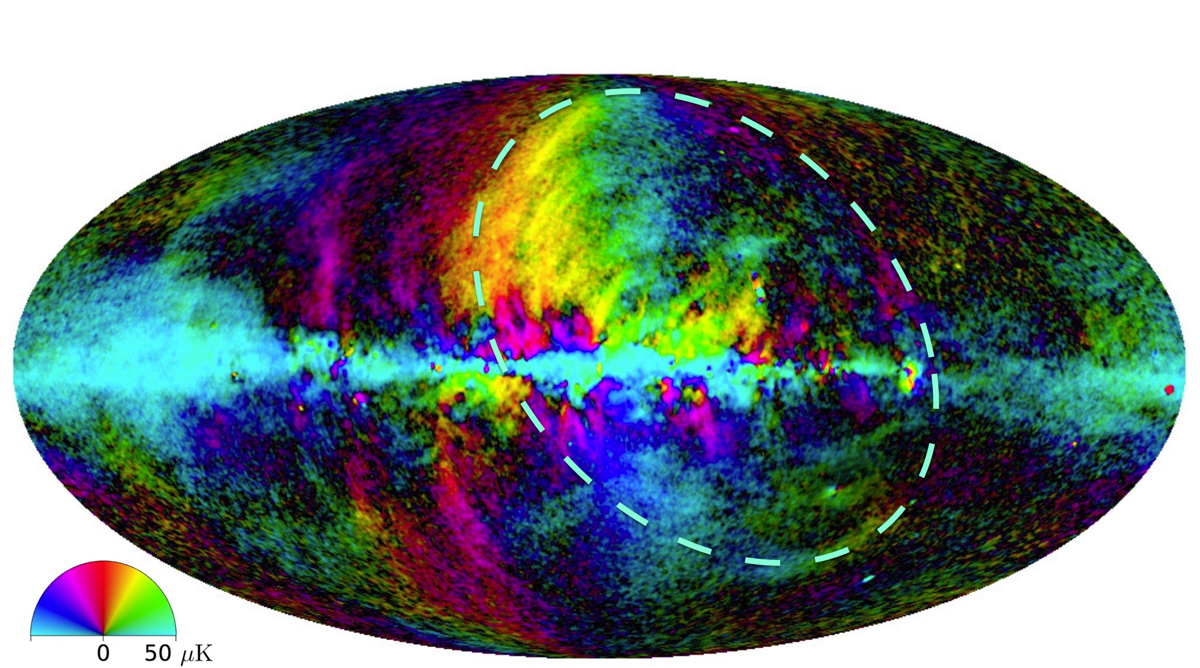
A full sky map made using the European Space Agency's Planck satellite. Loop 1, marked by the dashed ellipse, is the yellow feature above center, shading to purple, and the purple arc below center. The colors represent the angle of the magnetic field and the brightness represents the signal strength.
[Read the full story.]
Join our Space Forums to keep talking space on the latest missions, night sky and more! And if you have a news tip, correction or comment, let us know at: community@space.com.

Space.com is the premier source of space exploration, innovation and astronomy news, chronicling (and celebrating) humanity's ongoing expansion across the final frontier. Originally founded in 1999, Space.com is, and always has been, the passion of writers and editors who are space fans and also trained journalists. Our current news team consists of Editor-in-Chief Tariq Malik; Editor Hanneke Weitering, Senior Space Writer Mike Wall; Senior Writer Meghan Bartels; Senior Writer Chelsea Gohd, Senior Writer Tereza Pultarova and Staff Writer Alexander Cox, focusing on e-commerce. Senior Producer Steve Spaleta oversees our space videos, with Diana Whitcroft as our Social Media Editor.









